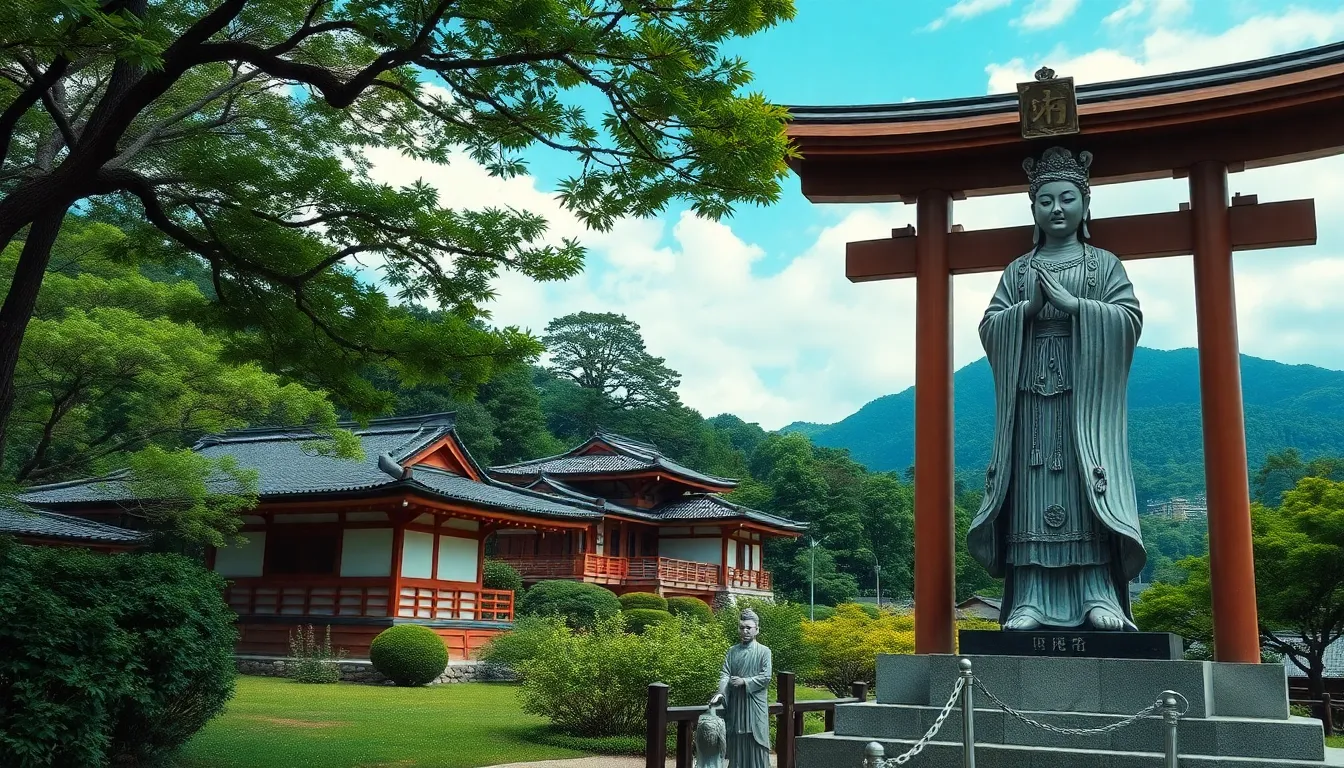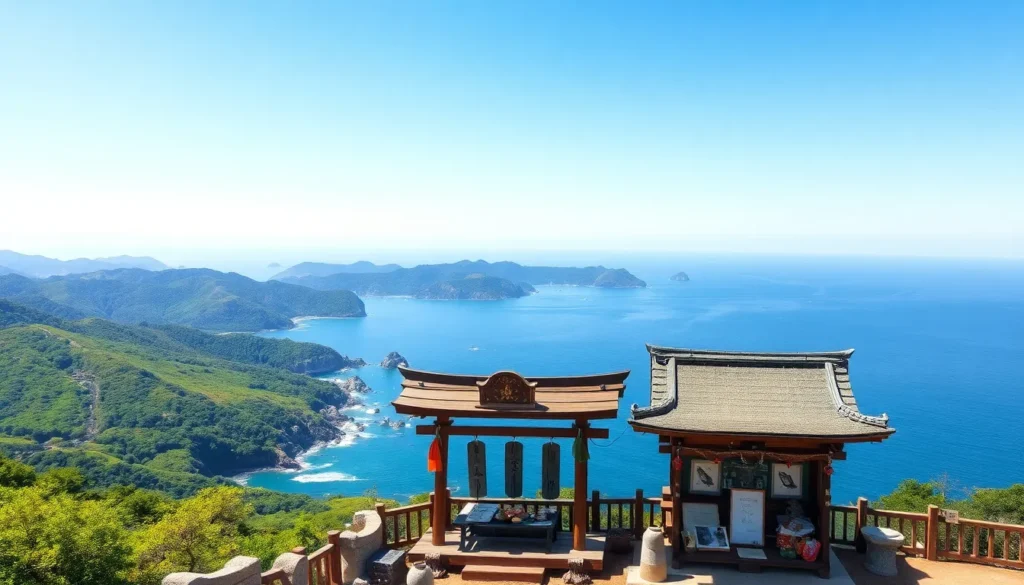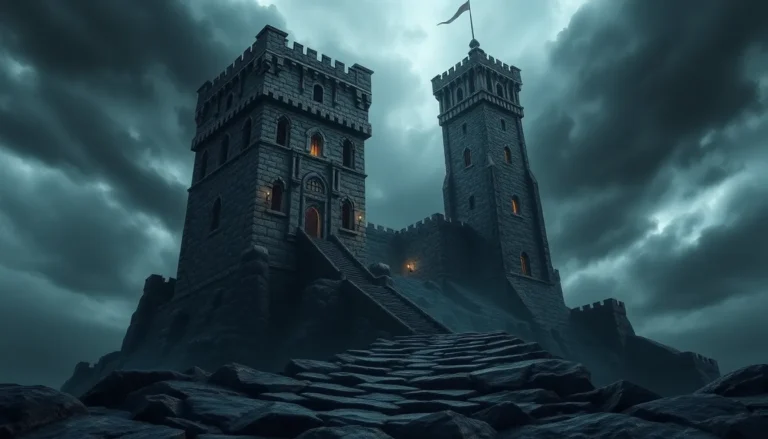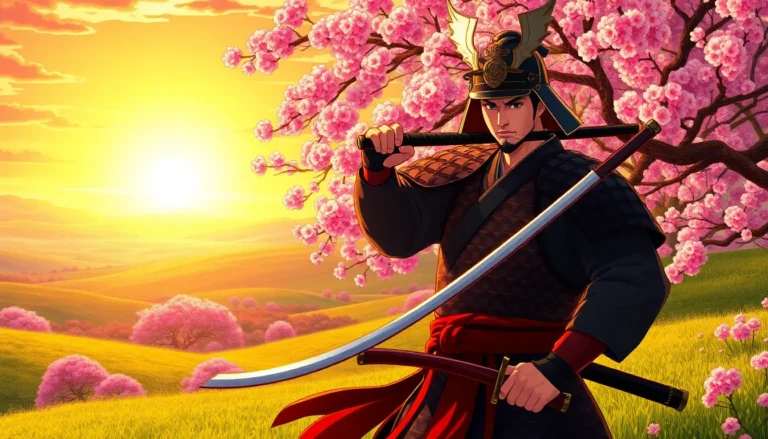Table of Contents
ToggleNestled between Japan and Korea, Tsushima Island is a treasure trove of mythic tales that weave together history and folklore. These stories, rich with the essence of local culture, captivate the imagination and reveal the island’s spiritual significance. From legendary deities to heroic figures, the narratives reflect the islanders’ deep connection to nature and their ancestors.
Exploring Tsushima’s mythic tales offers a glimpse into a world where the ordinary meets the extraordinary. Each tale carries lessons of bravery, love, and the supernatural, inviting listeners to embark on a journey through time. As these stories continue to be passed down through generations, they not only preserve the island’s heritage but also inspire curiosity about the rich tapestry of Japanese folklore.
Overview of Tsushima Mythic Tales
Tsushima mythic tales encompass a blend of historical and cultural narratives that reflect the island’s unique identity. These tales often center around legendary deities, heroic figures, and the natural landscape, emphasizing the symbiotic relationship between the environment and its people.
Tsushima’s deities, such as the goddess Kanon, play crucial roles in these stories, offering insight into spiritual beliefs and practices. The hero legends not only celebrate valor and sacrifice but also instill moral lessons that resonate across generations.
Nature, a key element in these narratives, illustrates various phenomena. Local flora and fauna are often anthropomorphized, adding layers of meaning to the tales.
Additionally, these mythic stories showcase the island’s historical events interwoven with folklore. They provide context to the struggles and triumphs of the Tsushima inhabitants, giving them a sense of belonging and continuity.
Through these tales, both past and present intertwine, preserving Tsushima’s rich cultural heritage while engaging contemporary audiences with lessons about love, bravery, and the supernatural.
Cultural Significance

The mythic tales of Tsushima Island hold profound cultural significance, reflecting the island’s historical narrative and spiritual identity. These stories are instrumental in connecting the community with its past, fostering a sense of belonging.
Historical Context
Historical events shape the mythic tales of Tsushima. The island’s strategic location has witnessed numerous conflicts, including battles during the Mongol invasions. These pivotal moments contribute to the heroic narratives that emphasize valor and resilience. Specific historical figures also emerge in the lore, bridging the gap between myth and reality. Collectively, this context enriches the understanding of Tsushima’s past and its enduring spirit.
Folklore and Legends
Folklore and legends serve as cultural cornerstones on Tsushima. Deities like the goddess Kanon symbolize the spiritual essence of the island, embodying protection and compassion. Anecdotes surrounding local flora and fauna often highlight their mystical qualities, bridging the natural world with human experiences. Tales of bravery, love, and supernatural encounters resonate deeply with inhabitants, instilling enduring moral values. These mythic narratives not only entertain but also educate, ensuring the continuity of cultural practices across generations. Through storytelling, the essence of Tsushima’s cultural identity thrives, captivating both locals and visitors alike.
Main Characters and Themes
Tsushima’s mythic tales feature a variety of characters and recurring themes that reflect the island’s cultural heritage. The narratives highlight bravery, compassion, and the spiritual connection to nature.
Heroic Figures
Heroic figures play a crucial role in Tsushima’s mythic tales. These characters, such as the legendary warrior Taira no Tadanori, exemplify courage and determination. Legends often portray these heroes defending their land against invaders, strengthening community identity. Other notable figures include local guardians believed to protect the island from evil forces. These heroes inspire residents and reinforce moral codes, serving as role models for future generations.
Common Motifs
Common motifs in these narratives include the interplay between nature and the supernatural. Many stories feature natural elements, like mountains and rivers, as living entities with agency. Animals often exhibit human-like traits, symbolizing wisdom or forewarning. Themes of sacrifice and resilience recur, illustrating the challenges faced by communities throughout history. Additionally, the concept of divine protection through local deities, such as Kanon, emphasizes the spiritual bond between the islanders and their environment. These motifs weave together the cultural fabric of Tsushima, enriching its mythic landscape.
Literary Analysis
The mythic tales of Tsushima exhibit a distinctive narrative structure and rich symbolism, reflecting the island’s culture and beliefs. These elements deepen the understanding of the stories and their impact on the community.
Narrative Structure
The narrative structure of Tsushima’s mythic tales often follows a cyclical pattern, integrating introduction, development, climax, and resolution. Characters frequently embark on transformative journeys, encountering trials that reveal their true nature. Episodes often intertwine, creating a tapestry where folklore meets historical episodes, such as the Mongol invasions. Narrative techniques, such as repetition and foreshadowing, enhance the storytelling experience, engaging audiences and emphasizing key themes like bravery and resilience. Dialogue pulls readers into the cultural nuances of the island, while vivid descriptions of landscapes create immersive environments.
Symbolism
Symbolism pervades Tsushima’s mythic tales, enriching the storytelling experience. Natural elements, like mountains and rivers, often symbolize obstacles that represent personal and communal challenges. Deities, such as Kanon, embody protection and compassion, reinforcing the islanders’ spiritual beliefs. Additionally, animals frequently serve as symbols of virtue or danger, providing moral lessons through their actions. Common motifs, like the interplay between nature and the supernatural, emphasize the bond between the people and their environment. These symbols create layers of meaning, prompting reflection on broader themes of identity, heritage, and interconnectedness in Tsushima’s cultural narrative.
Contemporary Relevance
Contemporary society draws inspiration from the mythic tales of Tsushima in various ways. These stories resonate with modern audiences, fostering appreciation for local culture and heritage. The emphasis on bravery and moral values appears particularly relevant as communities face contemporary challenges.
Cultural events and festivals on Tsushima often incorporate these mythic tales, celebrating history while reinforcing community ties. Events, such as the Tsushima Katsuura Fireworks Festival, highlight the island’s rich folklore, attracting tourists and locals. Engaging storytelling and performances bring these legends to life, enriching the cultural landscape.
Educational initiatives utilize Tsushima’s mythic tales to teach traditional values and environmental stewardship. Schools incorporate these narratives into curricula, instilling respect for nature and an understanding of the island’s history. This educational approach ensures future generations remain connected to their cultural roots.
The island also influences contemporary art, with artists drawing from mythic themes to explore identity. Visual art, literature, and film frequently reference Tsushima’s deities and legends, enabling broader recognition of this unique cultural heritage. By blending traditional narratives with modern expression, creators keep the island’s spirit alive.
In a globalized world, Tsushima’s mythic tales serve as a reminder of the importance of cultural diversity. These stories promote inter-cultural dialogue, inviting discussions about the interconnectedness of human experience. By exploring Tsushima’s rich narratives, individuals gain insight into their significance, fostering understanding across cultures.
Overall, the contemporary relevance of Tsushima’s mythic tales highlights the enduring power of storytelling. These narratives continually adapt to modern contexts, preserving history while inspiring future generations. As communities celebrate this heritage, the essence of the island’s identity thrives amidst a changing world.
The mythic tales of Tsushima Island serve as a vibrant testament to the island’s rich cultural heritage. These narratives not only celebrate the bravery and resilience of its inhabitants but also forge a deep connection between the community and its environment. As they echo through generations, they inspire a sense of belonging and continuity.
In a world that often overlooks local traditions, Tsushima’s stories stand as a powerful reminder of the importance of preserving cultural identity. They invite both locals and visitors to engage with the island’s history while fostering appreciation for its unique folklore. Through ongoing celebrations and artistic expressions, the essence of Tsushima continues to thrive, ensuring that its mythic tales remain alive and relevant for years to come.





